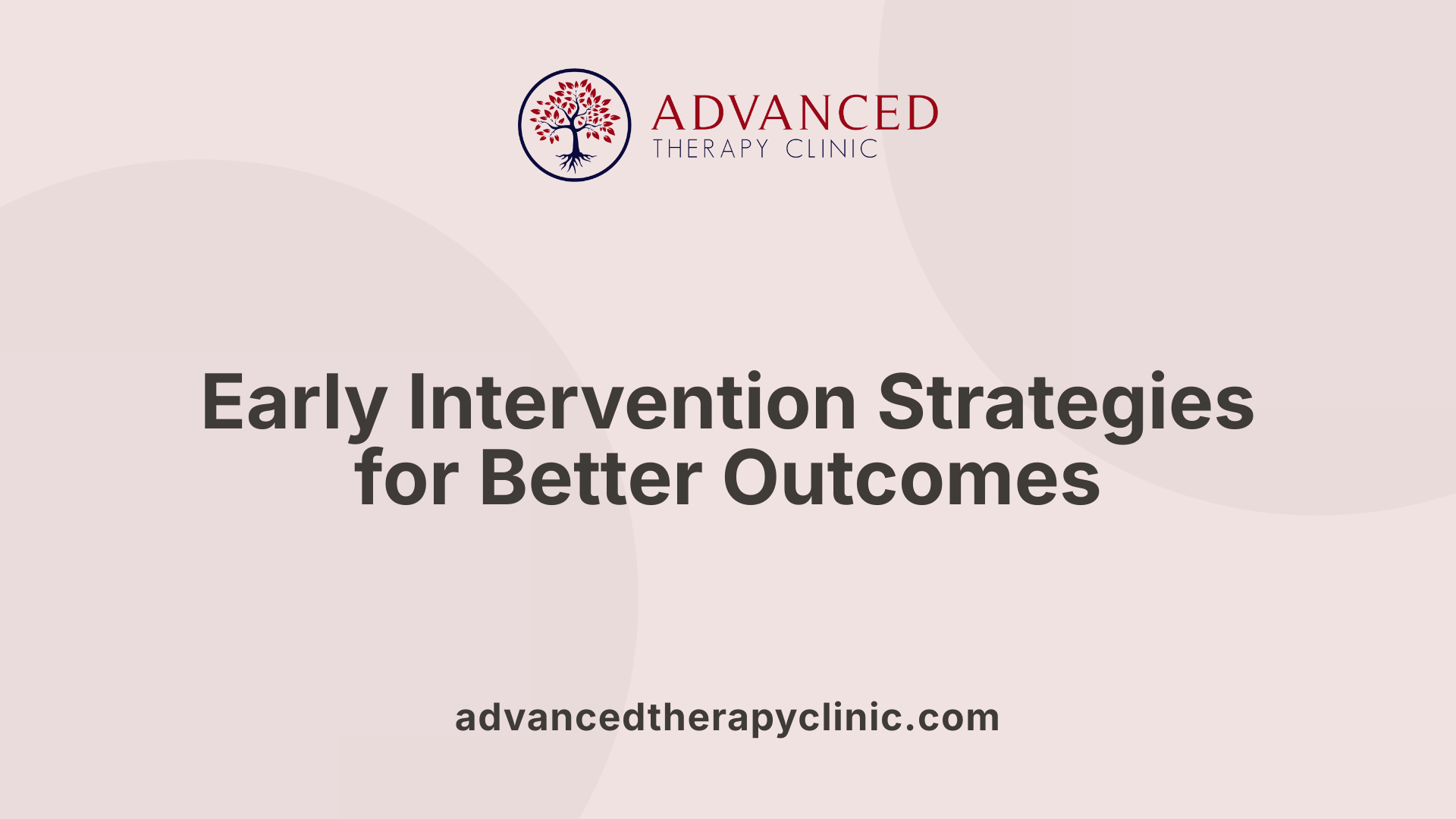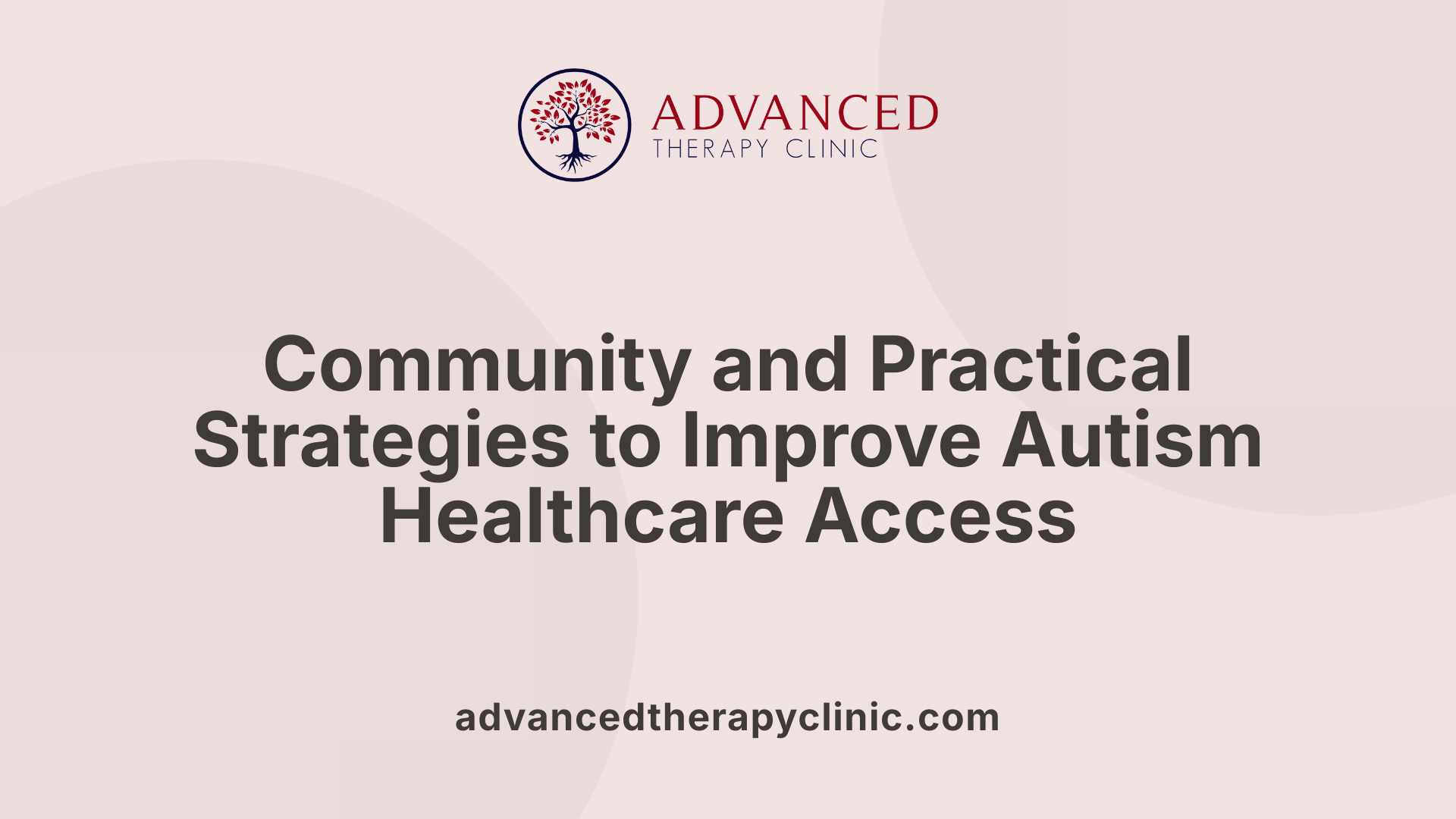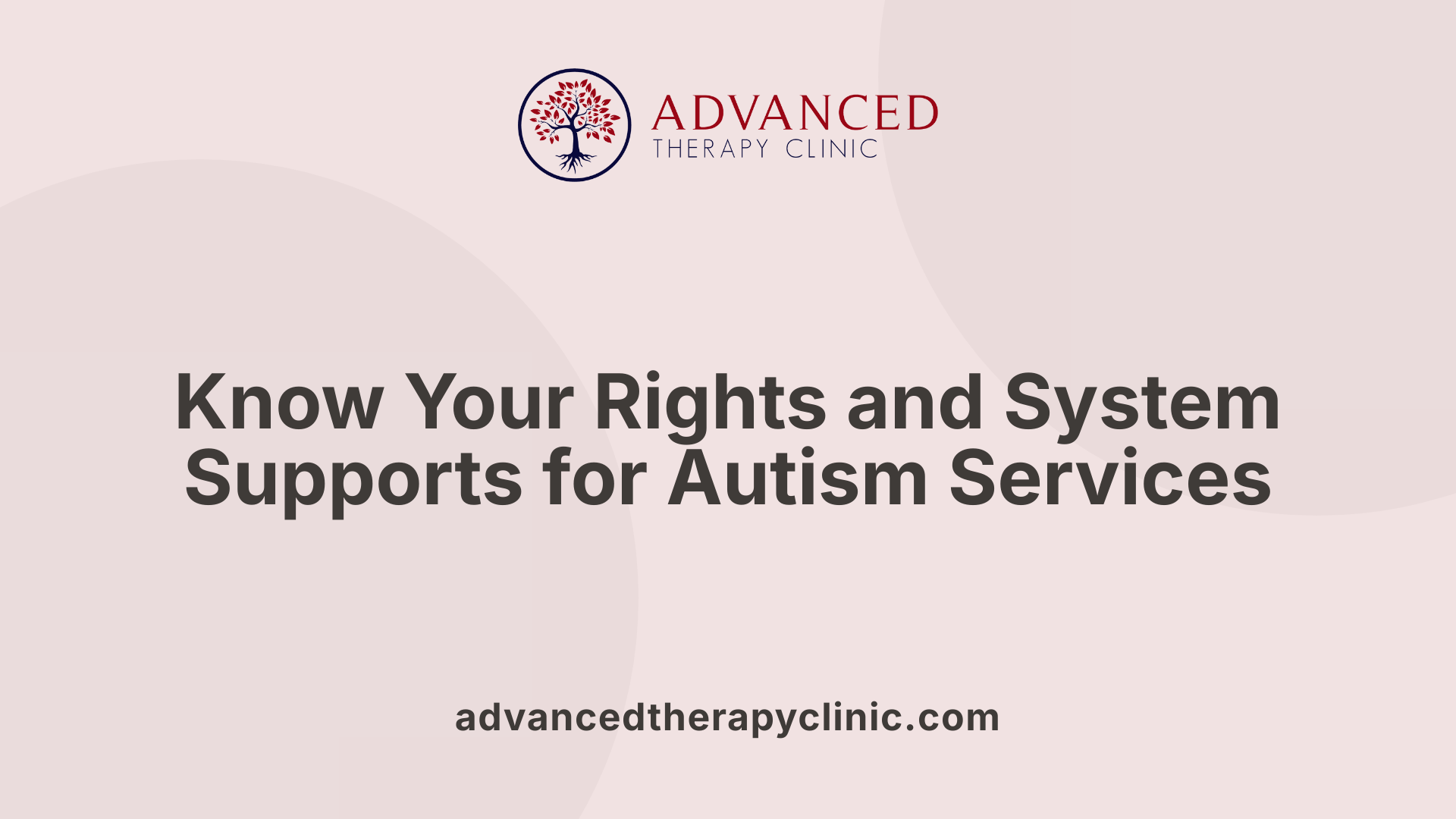Navigating Autism Healthcare Services


Understanding the Pathways to Support and Care
Navigating the complex landscape of autism healthcare services can be challenging for individuals and families. This comprehensive guide provides essential information on accessing, understanding, and overcoming barriers in autism healthcare across the lifespan. From diagnosis to adult care, learn effective strategies, available resources, legal rights, and support systems to facilitate informed decision-making and advocacy.
Building Foundations: Understanding Autism Diagnosis and Early Intervention

How is autism diagnosed, and what therapies and transition planning are available?
Autism Spectrum Disorder (ASD) is diagnosed primarily through behavioral assessments performed by qualified healthcare professionals. Since there is no single medical test for autism, clinicians rely on observing behavior and developmental progress. They use standardized tools such as the DSM-5 criteria to evaluate social communication skills, repetitive behaviors, and sensory sensitivities. Screening instruments like the Modified Checklist for Autism in Toddlers (M-CHAT) are often employed during pediatric check-ups to identify early signs of autism.
Genetic testing can be part of the diagnostic process, especially if autism appears alongside other medical conditions, helping to identify related genetic syndromes or chromosomal abnormalities. It's important to note that diagnosis involves a comprehensive review, including interviews with parents and caregivers, developmental history, and direct observation.
Early diagnosis is vital because it opens the door to timely interventions. During preschool years, therapies such as Applied Behavior Analysis (ABA), speech therapy, occupational therapy, and social skills training can significantly improve outcomes. ABA is an evidence-based approach focused on encouraging positive behaviors through reinforcement. Speech therapy helps develop communication skills, while occupational therapy addresses sensory processing issues and daily living skills.
Medication may also be prescribed to manage specific co-occurring symptoms like irritability, hyperactivity, or anxiety. However, these do not address the core features of autism.
Transition planning begins around early adolescence, aiming to prepare individuals for the next stages of life. It involves collaborative efforts between healthcare providers, educators, and families to develop skills for independent living, employment, and social participation. By having clear, supported pathways in place, individuals with autism can navigate changes more smoothly and achieve greater self-sufficiency.
Transitioning from Pediatric to Adult Healthcare: Keys to Success

What comprehensive guidance is available for navigating autism services across different life stages?
Navigating autism services throughout various stages of life requires understanding the specific resources, interventions, and support systems available at each phase. Early childhood is critical for intervention, focusing on developing communication, social skills, and daily living abilities through evidence-based therapies like Applied Behavior Analysis (ABA). As children grow, it becomes essential to tailor educational approaches and transition planning to prepare for independent living and employment.
During adolescence and young adulthood, guidance emphasizes creating transition plans by ages 12-14, including education, job training, and housing support. By age 16, a formal transition plan should be part of an Individualized Education Program (IEP), and by 18, legal and healthcare plans like guardianship arrangements and Medicaid should be in place.
Resources from organizations such as the Autism Society or the Organization for Autism Research (OAR) offer guides and toolkits to help families understand available services. These resources assist in making informed decisions and advocating for supports across the lifespan, ensuring that individuals with autism can access appropriate interventions, social services, and community integration opportunities at every stage.
Overcoming Barriers: Practical Strategies and Community Support

What strategies can help overcome barriers and challenges in accessing autism healthcare?
Addressing the obstacles faced by autistic individuals in obtaining healthcare requires targeted strategies that improve accessibility and quality of care. One fundamental approach involves training healthcare providers in autism-specific knowledge and skills. This education enhances their understanding of autism, increases confidence, and encourages more respectful, effective interactions with autistic patients.
Practical adjustments in healthcare settings can substantially reduce distress. For example, informing individuals about procedures beforehand, using visual supports, and adopting clear, simple language make interactions smoother. Creating sensory-friendly environments—such as reducing noise, adjusting lighting, and minimizing overwhelming stimuli—helps autistic individuals feel more comfortable during visits.
Support services tailored to various life stages, like transition programs from pediatric to adult care, ensure continuity and ease the shift to independence. Community-based initiatives, including local support groups and early intervention programs, foster ongoing assistance.
Innovative solutions like telehealth services extend care options beyond traditional settings, particularly benefiting those in underserved or remote areas. Supportive policies, advocacy, and the development of national roadmaps can drive systemic improvements, making healthcare environments more accessible and responsive to autistic needs. Taken together, these strategies promote equitable, effective healthcare experiences.
How can healthcare professionals improve services for autistic adults?
Healthcare providers play a pivotal role in enhancing care for autistic adults. Improving services begins with autism-specific training that deepens understanding of the unique health risks, communication differences, and sensory sensitivities of autistic adults. Training programs emphasize person-centered approaches and cultural competency, including awareness of gender diversity and identity-related issues.
To facilitate better interactions, professionals can implement simple language, visual aids, and flexible scheduling options. Creating sensory-sensitive environments—by reducing background noise, controlling lighting, and providing private spaces—helps minimize anxiety and overwhelm.
Building trust is paramount. Respectful, non-judgmental communication that recognizes each individual's preferences encourages engagement. Encouraging self-advocacy equips autistic adults to actively participate in their healthcare decisions.
Developing personalized health profiles that capture specific health concerns and communication preferences makes interactions more efficient and tailored. Establishing and supporting community networks, such as peer groups and advocacy organizations, further empowers autistic adults, helping them navigate services confidently and independently.
What community-based initiatives support access to autism healthcare?
Community-driven efforts are essential in expanding access and improving the quality of autism healthcare. Initiatives like the WHO-led caregiver training programs educate families and caregivers, enabling them to better support autistic individuals and advocate for their needs.
Local support groups, both online and in person, foster shared experiences, provide emotional support, and disseminate information about available services. These groups often collaborate with healthcare providers to promote early diagnosis and intervention.
Developing sensory-friendly clinics—spaces designed to accommodate sensory sensitivities—reduces environmental stressors, encouraging more autistic individuals to seek care. Telehealth services have become invaluable, especially for those in remote or resource-limited areas, breaking down geographical barriers.
Advocacy efforts aimed at policy change emphasize resource allocation, funding, and inclusive service design. Community-based programs that promote awareness, training, and accessible environments are vital in building a comprehensive, culturally competent healthcare system that supports autistic individuals across their lifespan.
Legal Rights, Procedures, and System-Level Supports

What rights and procedures are involved in obtaining autism-related services?
Individuals with autism and their families have legally protected rights that facilitate access to necessary services. These protections are outlined in laws such as the Americans with Disabilities Act (ADA), the Individuals with Disabilities Education Act (IDEA), and Section 504 of the Rehabilitation Act. These laws ensure nondiscrimination, equal access, and accommodations in education, healthcare, employment, and public spaces.
Securing autism-related services generally involves several steps. First, obtaining an accurate diagnosis through behavioral observation and developmental assessments is crucial. Screening tools like the Modified Checklist for Autism in Toddlers (M-CHAT) help identify early signs. Once diagnosed, families can advocate for individualized plans, such as IEPs or Family Service Plans (IFSPs), which specify tailored educational and support services.
Application procedures typically include submitting documentation to schools, healthcare providers, or community agencies. This might involve medical records, psychoeducational evaluations, and consent forms. Families also have the right to request accommodations in healthcare settings, employment, and daily activities.
Support from advocacy organizations such as the Autism Society provides additional guidance, tools, and resources. Rights extend to accessible healthcare, which includes communication accommodations, sensory-sensitive environments, and respect for identity-related language and preferences. Navigating these procedures effectively often requires engaging public agencies, understanding legal entitlements, and advocating persistently.
How can systemic reforms improve autism healthcare access?
Improving access to autism healthcare requires broad systemic reforms that address existing barriers at multiple levels. Key initiatives include enhancing healthcare provider training to increase autism competence, ensuring that providers understand specific health risks and communication strategies.
Expanding insurance coverage and funding is essential to reduce financial barriers, especially in countries or regions where healthcare costs can be prohibitive. Incorporating autism-specific services into standard health plans and broadening access to multidisciplinary care teams can improve health outcomes.
Developing clear pathways for transition from pediatric to adult healthcare is another critical update. This includes establishing procedures for transferring medical records, creating shared communication channels between care teams, and preparing autistic individuals for medical appointments.
Policy reforms at the national and state levels can prioritize autism healthcare by allocating resources, establishing standards for sensory-friendly clinics, and reducing disparities related to socioeconomic status, language barriers, or geographical location. Public health campaigns and increased awareness efforts help reduce stigma and raise community understanding.
Support from advocacy groups and public health authorities can promote comprehensive reform, fostering an inclusive, equitable healthcare system that adapts to the diverse needs of autistic individuals. As a result, individuals across all ages can attain quality healthcare that respects their rights, preferences, and unique circumstances.
| Aspect | Current Challenges | Proposed Reforms | Expected Benefits |
|---|---|---|---|
| Provider Training | Limited autism knowledge | Mandatory autism education | Better communication, diagnosis, and management |
| Insurance Coverage | High costs, limited plans | Broader autism coverage | Increased access, reduced financial burden |
| Healthcare Transition | Poor adult services | Structured delay and transition protocols | Smoother shift from pediatric to adult care |
| Environment | Sensory overloads | Sensory-friendly clinics | Reduced anxiety and improved care |
| Disparities | Socioeconomic, language, geography | Equitable resource distribution | Inclusive access for all populations |
Addressing these issues through systematic reforms will create a healthcare landscape in which autistic adults and children receive timely, respectful, and effective support tailored to their needs.
Taking Steps Toward Inclusive and Accessible Healthcare
Improving access to autism healthcare services requires a multifaceted approach—spanning provider training, community support, systemic reforms, and individual advocacy. By understanding the available resources, establishing clear communication, and actively engaging with support networks, families and autistic individuals can navigate the complex healthcare landscape effectively. The ultimate goal is to create a healthcare environment that respects diversity, promotes early and continuous intervention, and supports individuals across all stages of life. With ongoing efforts, targeted policies, and community engagement, we can ensure that every autistic person receives the respectful, comprehensive healthcare they deserve.
References
- Adult Autism Health Resources Health Care Toolkit
- Resources for Families Navigating Autism
- Tackling healthcare access barriers for individuals with autism from ...
- Navigating Autism Diagnoses - Cigna Healthcare
- Pathway to Services and Supports / Minnesota Autism Portal
- Navigating the health system | Autism Awareness Australia
- Arizona! - Autism Society of Greater Phoenix
Recent articles

Strategies for Improving Focus and Attention in Occupational Therapy
Enhancing Attention and Focus through Tailored Occupational Therapy Techniques

Using Visual Supports in Autism
Transforming Autism Support with Visual Tools

What Is Speech Therapy?
Understanding the Power of Speech Therapy in Enhancing Communication

The Impact of Physical Therapy on Pediatric Development
Enhancing Childhood Growth through Tailored Therapies

Find Free RBT Training Near You
Unlock Your Career in Behavior Analysis with Free RBT Training Options

Can Elderly People With Autism Need Home Care?
Supporting Aging Autistic Adults: Essential Care Strategies


